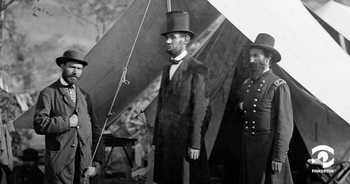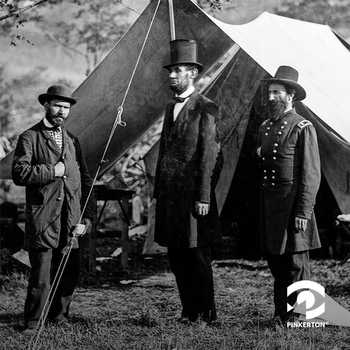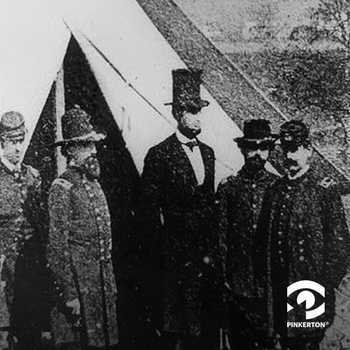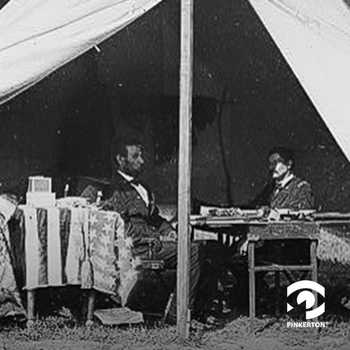
Following the onset of the Civil War in 1861, President Abraham Lincoln appointed Allan Pinkerton, the famed detective and founder of Pinkerton’s National Detective Agency, Chief of the Secret Service. Pinkerton, who went by the nom de guerre Major E. J. Allen, was tasked to set up and supervise Union intelligence operations. Subsequently, Pinkerton organized the United States’ first Secret Service Division under the guidance of General George B. “Little Mac” McClellan, the Commander of the Army of the Potomac at the time.
According to Civil War history, Pinkerton's Secret Service was based at McClellan’s headquarters in Cincinnati. However, during the Maryland Campaign culminating in the Battle of Antietam near Sharpsburg, Maryland, Pinkerton moved Secret Service headquarters to the battlefield. This move allowed the Secret Service agents — scouts and spies — to provide real-time, crucial information to the Union forces.
In October 1862, just two weeks after the Battle of Antietam, President Lincoln along with General John A. McClernand visited the battlefield headquarters of the Army of Potomac and the Secret Service operations to confer with Little Mac. The battle and visit served as a preliminary to Lincoln’s Emancipation Proclamation, which stated that on January 1, 1863, all slaves in states still in rebellion would be free.
In a letter to his brother, Robert Pinkerton, regarding one of the most famous photographs of President Lincoln, William Pinkerton recalled, “While visiting the army in general, Mr. Lincoln called at our camp to see father and renew the old acquaintance which had existed between them. Mr. Alexander Gardner, the official photographer of the Army of the Potomac, was attached to the Secret Service Division, and seeing a good opportunity to take a picture, fixed up a plate and then told President Lincoln he would like to make a sitting of him, meaning to take him alone.”
Mr. Lincoln replied in his good-natured way, “All right. Come in here Major, come in here General, and have your picture taken.”
Robert wrote that the photo — which has become one of the most famous photos of President Lincoln and Allan Pinkerton — was taken without any other preparation. This is underscored by the two unidentified figures in the background next to the tent.

Afterward, Gardner took another photo of the President alone. He went on to describe the visit, "Mr. Lincoln, while in camp, visited everybody and was like a big schoolboy, going around getting acquainted with everybody and talking with everybody, from a private soldier to a major general, in his good-hearted, genial, pleasant way.”
Many years later in a letter the Pinkerton brothers, General McClernand also recalled the photo, “The incident…is still fresh in my mind. It occurred in front of Allan Pinkerton’s tent, which was close to General McClellan’s tent, headquarters on the stricken field of Antietam. It was there that the photograph of President Lincoln, Allan Pinkerton, and myself was taken.”
Throughout the visit, Gardner took several other photos of the President and the soldiers. The narratives behind these photos bring to life a pivotal Civil War event in American history. They embody significant challenges, confidential reporting, and strategic decisions. For Pinkerton, it represented his critical role in establishing America’s first Secret Service Division. For Lincoln, it marked a turning point preceding the Emancipation Proclamation. These images stand as a testament to the resilience and leadership in history that shaped the nation.


This blog is a part of our Scouts and Spies series. Our founder, Allan Pinkerton, and his team of scouts and spies played a critical role in intelligence support for the Union Army during the U.S. Civil War, providing a tactical advantage on the battlefield. Skilled in reconnaissance and surveillance, they navigated enemy territory, monitored enemy movements, and gathered crucial information that aided military intelligence decision-making.
Pinkerton “scouts” still play a crucial role. Organizations today rely on our research and intelligence to help shape their strategies, identify vulnerabilities, and anticipate threats, ensuring the success and safety of their operations across diverse environments. Trust in the Pinkerton legacy, and let our scouts guide your due diligence process today.





